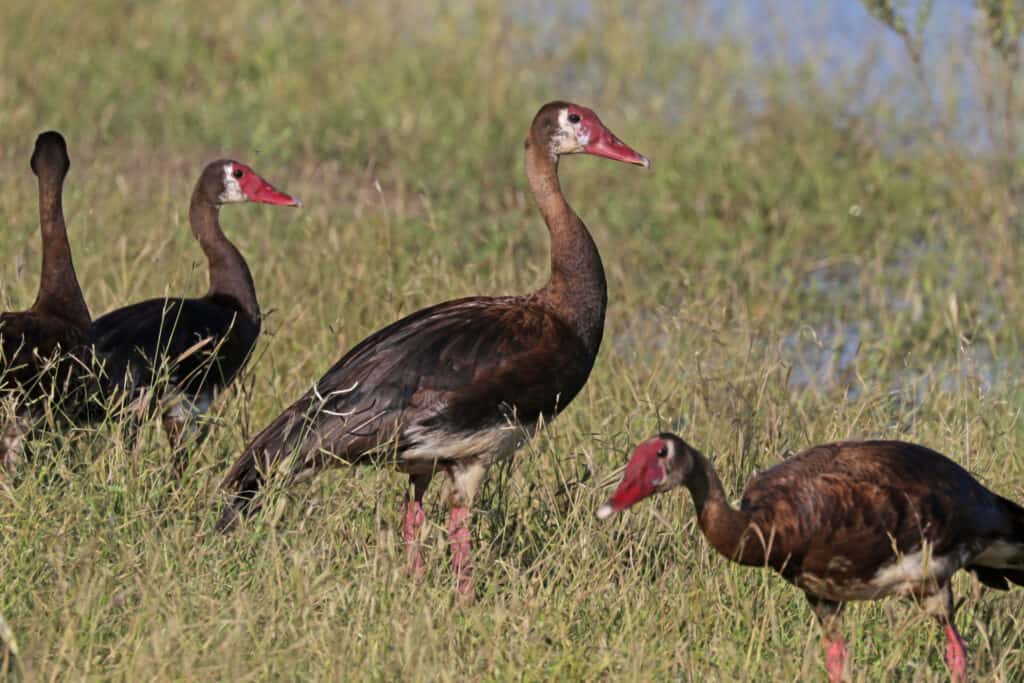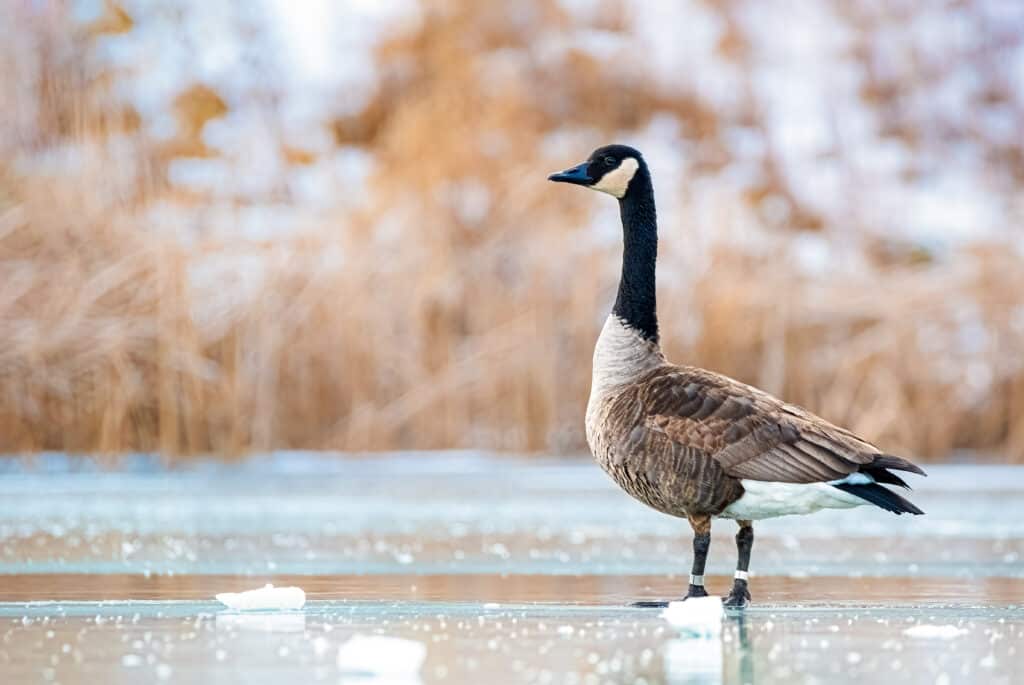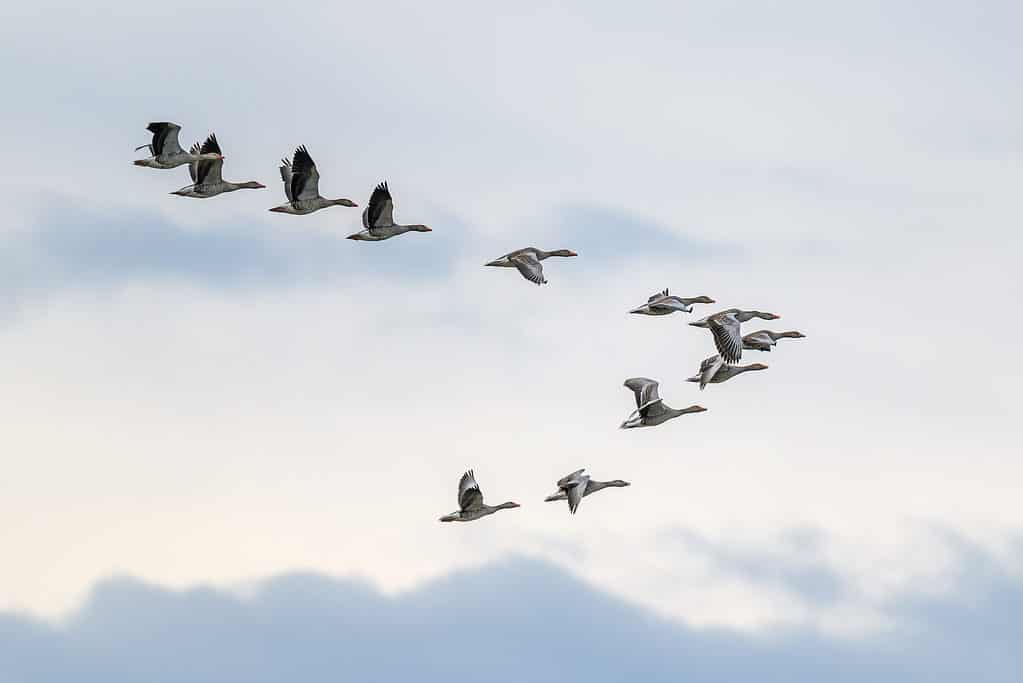Geese are often seen flying over our heads in v-shaped formations as the seasons change. Whether we see them above us during the warmer months or on the ground tearing up a golf course, it feels like geese are almost always in a group. Today, we will help answer the question, “What is a group of geese called?”, and learn a bit about these funny birds. Let’s get started!
What is a Group of Geese Called?

There are a lot of names for groups of geese!
© Charles J. Sharp / CC BY-SA 4.0 – License
A group of geese is known by a few names, most of which depend on if they are in the air or on the ground. In the air, groups of geese are known as a skein, team, or wedge, while on the ground, they are known as a gaggle. As birds, however, they can also just be collectively referred to as a flock.
Even further, there are different descriptions for groups of geese, most notably including a chevron (a flying V), a cluster, or a sord. Still, these are generally descriptions of groups of geese, not names for the group itself.
It’s also important to note that there are different types of geese, and not all birds with “goose” in their name are technically considered a goose. Confusing, right? Geese can be broken into two genera, grey geese and white geese and black geese, of which ducks and swans aren’t members, although they are related.
Do All Geese Live in Groups?

Most species of geese are extremely familial and stay in groups.
©Rogney Piedra Arencibia/Shutterstock.com
Geese are extremely social animals that almost always live in groups. The Canada goose, for example, is usually found in migratory groups of between 30-100 birds, although they can create mega flocks (not a scientific term here) in some instances where groups combine. These mega flocks can reach over 1000 birds but aren’t all that common. As Canadian geese fly, they honk in order to attract more geese to their formation. Most people agree that a flock of geese starts around five or more individuals.
Within groups of geese, there are smaller couplings of individuals. Geese are one of the few species of animals that practice lifelong monogamy and will partner with a mate for life. Young geese (goslings) are extremely susceptible to predators, and the dual protection of a mated couple helps increase the survival odds. If a mate dies, the lone goose will seek out other available mates while helping other mated pairs with their young!
Outside of the mating pairs, flocks of geese are still pretty familial. They often have extremely strong family ties, with young geese recognizing their parents even through adulthood.
When Do Geese Leave Groups?
Geese don’t often leave groups in search of another. Lone geese don’t have great survival odds since there is so much safety found within the flock. Still, it does occasionally happen when a lone goose needs to leave its flock in search of another mate. Since geese mate for life, this process only happens when a mate dies. Once a goose finds another mate, they will then form a lifelong bond and raise young together each year.
In most other species of birds, the young that are raised within the flock will eventually strike out on their own in search of a new flock to be a part of. This is partially the case with geese, but it doesn’t happen as much as with other birds. In fact, Canadian geese, for example, will often flock up with their parents and siblings while heading out in a migratory flock.
Are All Geese Migratory?

Geese fly in a V formation to take advantage of air currents created by their wings.
©Volodymyr Burdiak/Shutterstock.com
Almost all species of geese are migratory and will fly thousands of miles to new feeding grounds during the seasonal changes throughout the year. The Canadian goose is famously seen overhead in North America as they fly south for winter and then north again as summer nears. The breeding grounds for many species of goose are in the Arctic and sub-Arctic regions.
Despite most species migrating huge distances as the seasons change, there are certain populations of geese that have started to grow sedentary. These sedentary populations of geese are the result of a few factors, with humans probably being the most impactful. The types of land that geese prefer, large areas of wetlands or grasses, are being increasingly created by humans in the form of lawns, fields, or sporting areas. For many geese, these man-made areas (to the anger of many humans) become year-round regions for breeding and feeding. These populations of resident geese are on the rise and will likely continue as human activity and climate change further change the landscape.
The photo featured at the top of this post is © Volodymyr Burdiak/Shutterstock.com
Thank you for reading! Have some feedback for us? Contact the AZ Animals editorial team.






